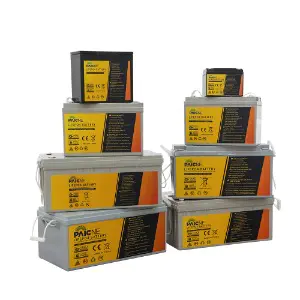Stability as a Core Advantage of Lithium Iron Phosphate Technology
The Lithium Iron Phosphate Battery is widely recognized for its good stability in a range of operating conditions. Compared to other lithium-ion chemistries such as lithium cobalt oxide (LCO) or lithium nickel manganese cobalt oxide (NMC), the Lithium Iron Phosphate Battery is inherently more stable due to its chemical structure, making it a preferred choice in applications where safety and long-term reliability are top priorities.

Thermal and Chemical Stability
One of the celebrated qualities of the Lithium Iron Phosphate Battery is its good thermal stability. The olivine structure of the LiFePO₄ cathode material is highly resistant to thermal decomposition, which reduces the risk of overheating or combustion. Unlike some lithium-ion batteries that can enter a dangerous state known as thermal runaway under high temperature or stress, the Lithium Iron Phosphate Battery typically remains chemically stable even when temperatures approach 250°C. This characteristic makes it particularly well-suited for high-temperature environments and safety-critical applications.
Cycle Life and Performance Degradation
Stability in a battery is not only about safety but also about consistent performance over time. The Lithium Iron Phosphate Battery has an impressively long cycle life, often exceeding 2,000 to 5,000 charge-discharge cycles without significant capacity loss. This stands in contrast to many other lithium chemistries, which may degrade more rapidly under similar conditions. The stable chemistry of LiFePO₄ allows it to operate efficiently at partial states of charge, making it an ideal candidate for renewable energy storage, electric vehicles, and backup power systems where batteries are frequently cycled.
Resistance to Overcharging and Overdischarging
Another component of the Lithium Iron Phosphate Battery’s stability lies in its predictable voltage behavior and resistance to overcharging. LiFePO₄ cells have a flat discharge curve and operate within a relatively narrow voltage range, reducing the likelihood of overvoltage stress. Furthermore, they are more tolerant to overdischarge conditions compared to other lithium-ion types, which contributes to overall durability and system reliability, especially in off-grid or fluctuating power environments.
Environmental Stability and Low Risk of Toxic Release
Environmental safety is an important measure of a battery’s stability. The Lithium Iron Phosphate Battery contains no cobalt or heavy metals that can leach harmful substances into the environment if damaged or improperly disposed of. In case of mechanical failure or fire, the battery is less likely to release toxic fumes than many competing chemistries. This makes it more eco-friendly and easier to manage at the end of its life cycle.
Application Stability Across Various Industries
Thanks to its good stability, the Lithium Iron Phosphate Battery has found adoption in industries that demand high reliability and safety, such as public transit, medical equipment, telecom backup systems, and residential solar energy storage. These sectors value not only the battery’s performance but also its resilience under mechanical shock, temperature variation, and prolonged use. Its ability to maintain stable voltage output over time ensures smooth operation of sensitive electronic systems without unexpected drops or surges.
A Chemically and Operationally Stable Power Solution
The Lithium Iron Phosphate Battery is among the stable and secure lithium-ion battery technologies available today. With good thermal characteristics, a long lifespan, and strong resistance to overcharging, it continues to outperform many alternatives in both safety and reliability. Whether deployed in large-scale energy systems or mobile applications, its stable chemistry ensures dependable performance in demanding real-world conditions.
Get to know quickly
We are a professional lithium iron phosphate battery, solar energy storage system, industrial and commercial energy storage system manufacturer.
 +86-133 3592 3377
+86-133 3592 3377
 +86-4008833583
+86-4008833583
 Email: [email protected]
Email: [email protected]

Copyright © Zhejiang Paichen Energy Storage Group Co., Ltd All Rights Reserved.
Battery Energy System Manufacturer
